Hive has been around since March 20, 2020. Let’s take a look how we are doing when it comes to burning HIVE.

The initial option that was built-in for burning HIVE was the promote option. On the old chain there was a promote section tab, that was mainly not used by almost anyone. Now this tab is no longer on Hive.Blog so the initial idea for burning HIVE is not available now.
Peakd have developed their own model for promotion and burning HIVE and it seems that it is used a bit. Not on a massive scale though, but yet there is some.
Other options for burning HIVE are the cost for creating account and community (3 HIVE) and also for making proposals.
In the past there were a few initiatives for burning tokens with setting null as beneficiary on posts like the @burnpost. Now this initiative is runed by @buildawhale with voting on the comments.
From technical standpoint we can summarize the burning options in three sections:
- Transfers to null
- Null as post beneficiary
- New accounts creation fee
The period that we will be looking here is from 2020 to 2024
Transfers to @null Account
Here is a breakdown by date for HIVE transferred to null.
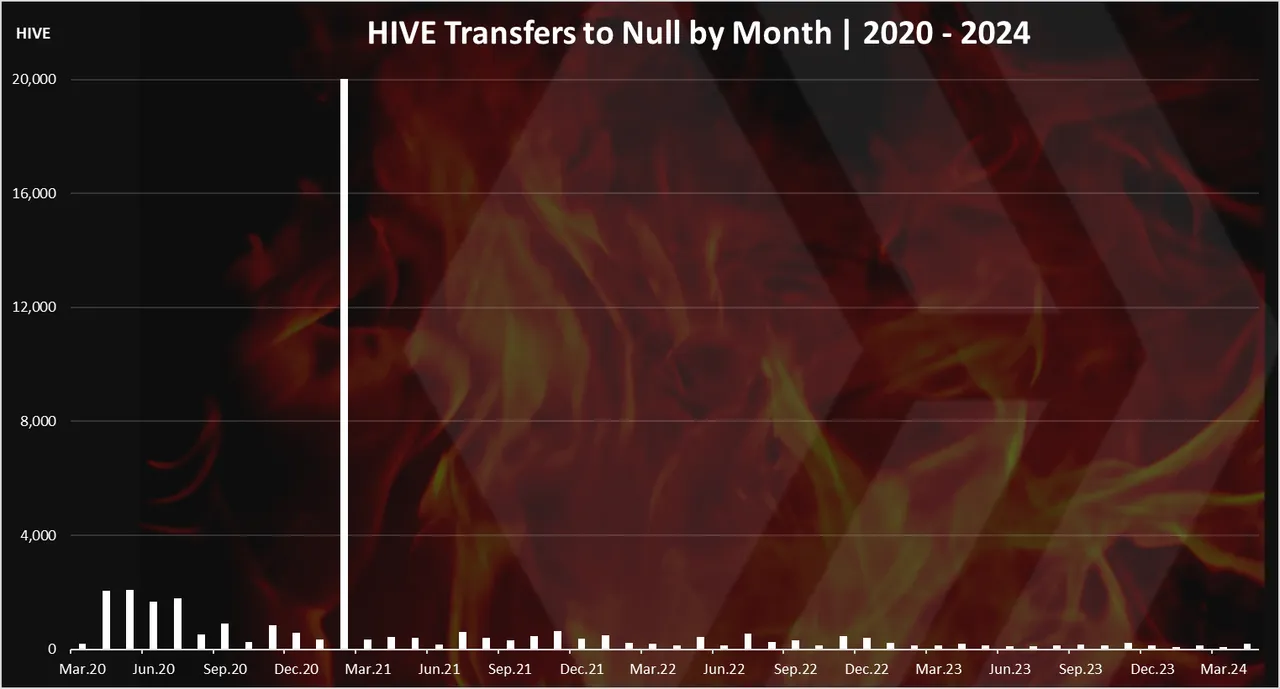
The chart is on a monthly level.
Here we can see that there is one big burn event with transfers to @null in February 2021. The chart is even cut out to 20k for visibility while the transfer is to 200k. This was a transfer made from the previous account that was used to peg the HBD price. In the last period we can see that the overall transfers to @null are insignificant and in small amounts. On average around 200 HIVE per months has been burnt per month in the last period.
Top Accounts Making Transfers to @null
Who has been transferring to @null? Here is the chart.
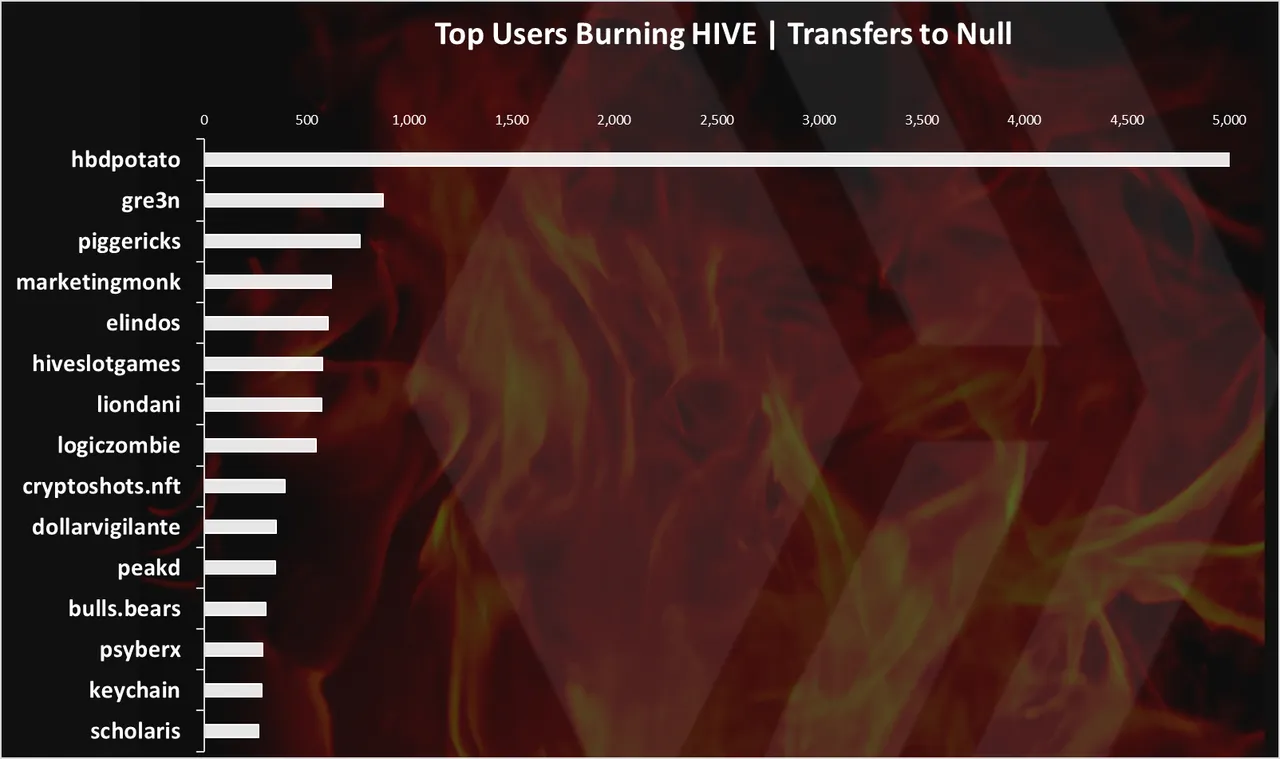
The @hbdpotato account is on the top. As mentioned this account was connected with a previous account traying to stabilize the HBD peg, similar to what now the @hbdstabilizator is doing. A total of 191k HIVE was sent to @null by this account only.
On the second spot is the @gre3n account followed by @piggericks.
Setting @null as Beneficiary
Another way for burning HIVE is setting @null as beneficiary. For the not so familiar what this means, it basically sent the rewards for that post to @null, burning them.
Here is the chart.
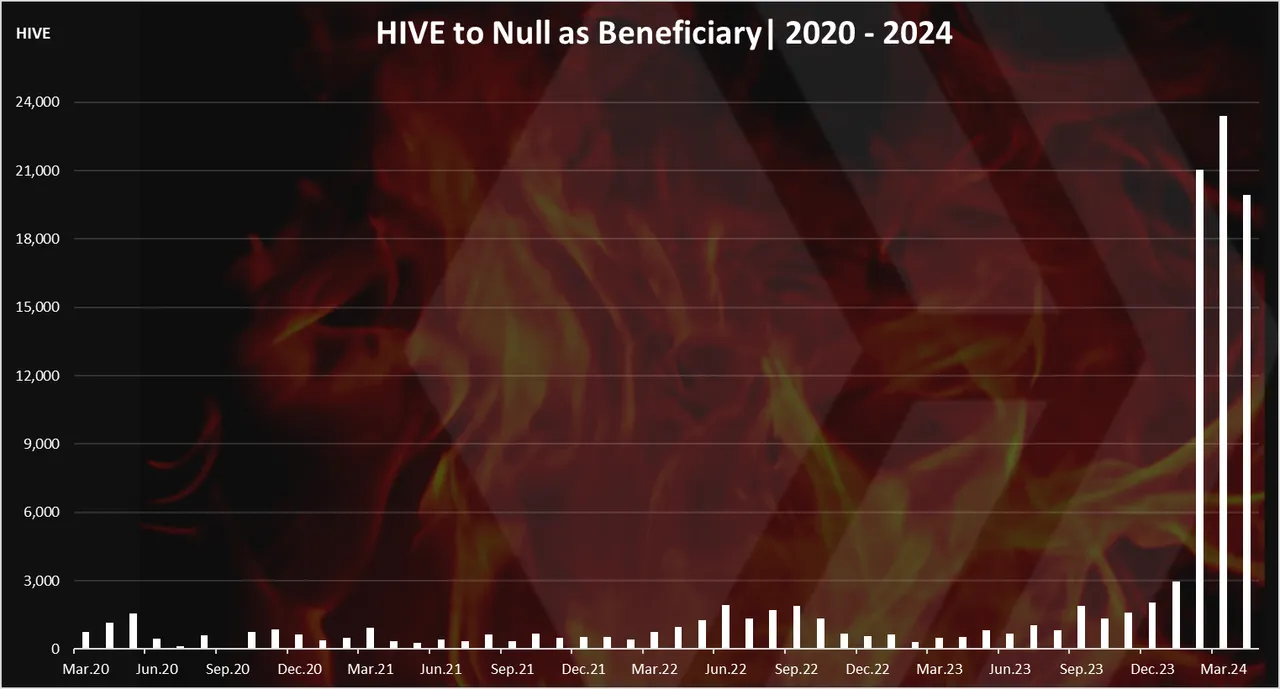
The chart is on a monthly basisi.
We can notice the spike in the amounts of HIVE sent to @null as post beneficiary. This is due to the renued campaigh by the @buildawhale that is making a daily burn post with multiple comments that can be voted on. Some large stakeholders are using this to burn HIVE.
In the last months around 20k HIVE per month is burned from @null as beneficiary.
Top Accounts Setting @null as Beneficiary
Here is the table for top users that burned HIVE in the period with setting @null as beneficiary.
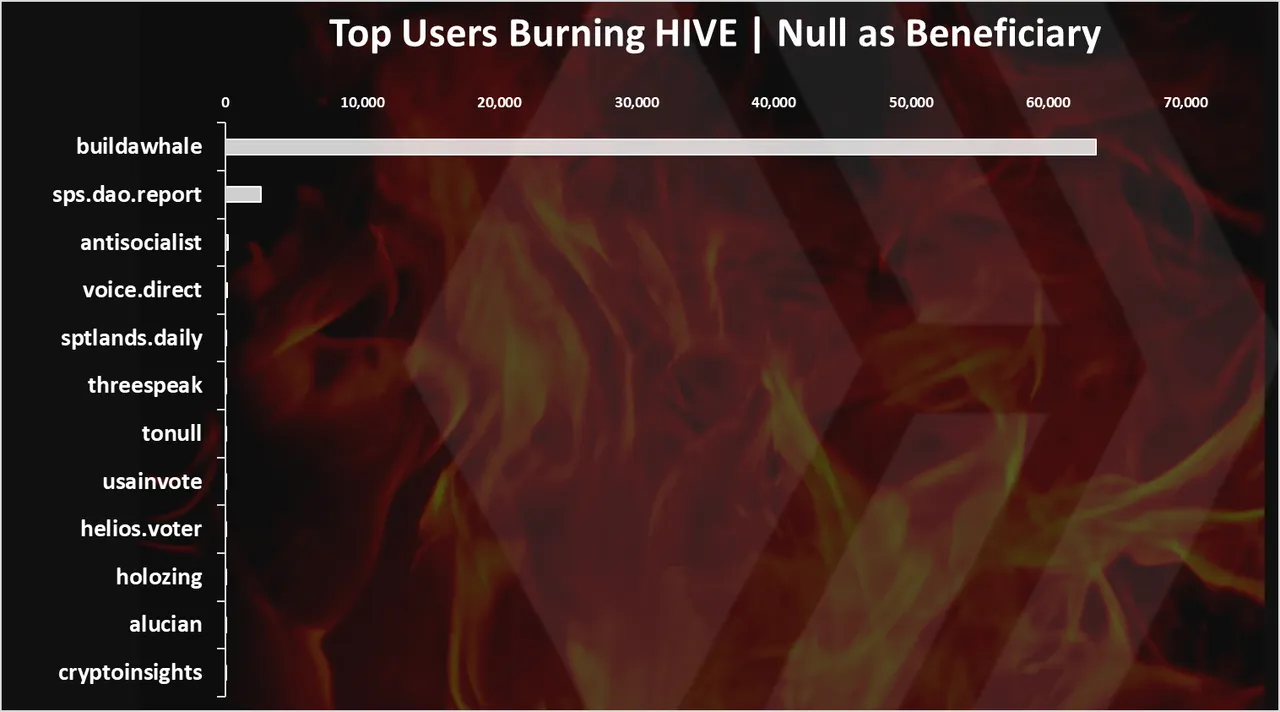
The @buildawhale account is on the top by a lot with 63k HIVE burned, followed by @sps.dao.report. The second account is making daily reports for the Splinterlands DAO and is burning the HIVE from the post rewards. The other accounts on the list are having small amounts.
Account Creation Fees
Another way for burning HIVE is from the creation of HIVE accounts.
Here is the chart.
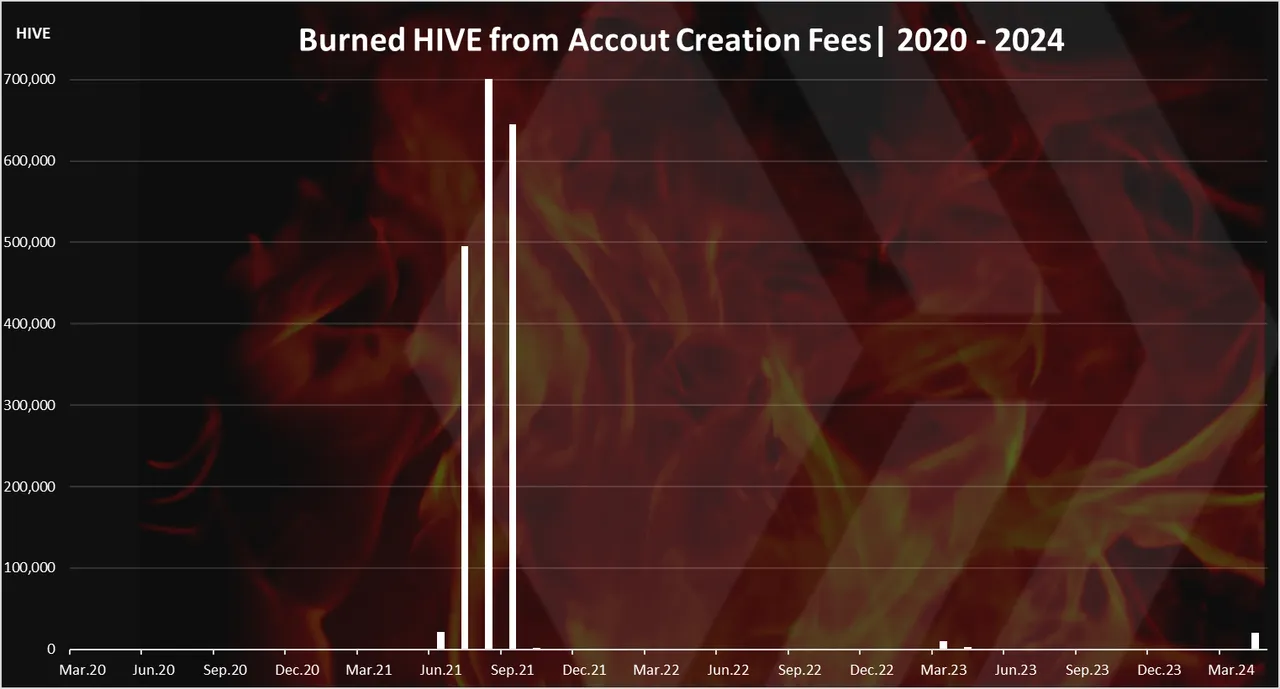
The chart is on a monthly basisi.
We can notice the spike in the amounts of HIVE burned from account creation fees back in September - October 2021. In this period Splinterlands created a lot of accounts and burned a lot of HIVE in the process. Close to 2M HIVE was burned in a period of three months.
In the other months this number is very low, with around 700 HIVE burned per month. There is some small spike in the last month April 2024 with close to 20k HIVE burned from account creation.
Top Accounts Burning HIVE from Account Creations Fees
Here is the table for top users that burned HIVE in the period with setting @null as beneficiary.
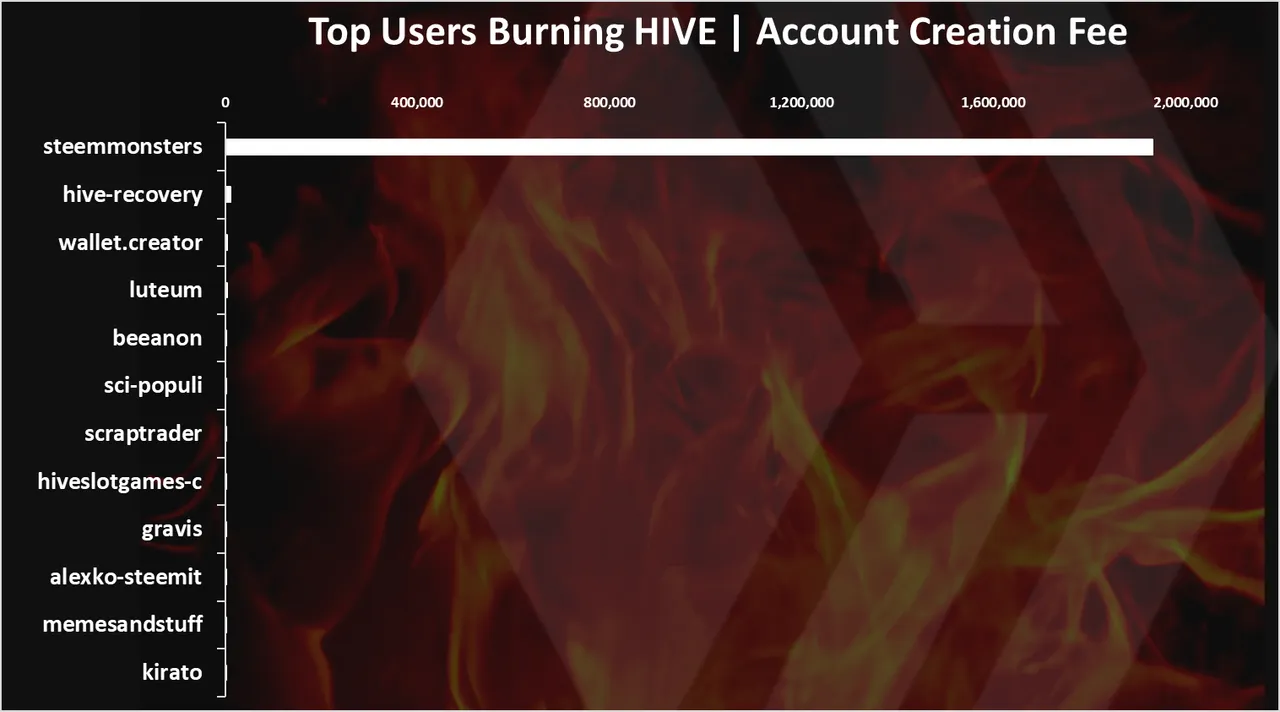
Splinterlands is by far on the top here with 2M HIVE burned from creating accounts. On the second spot is the @hive-recovery account, followed by @wallet.creator.
Cumulative HIVE Burned
Here is the chart for the cumulative HIVE burned by category.
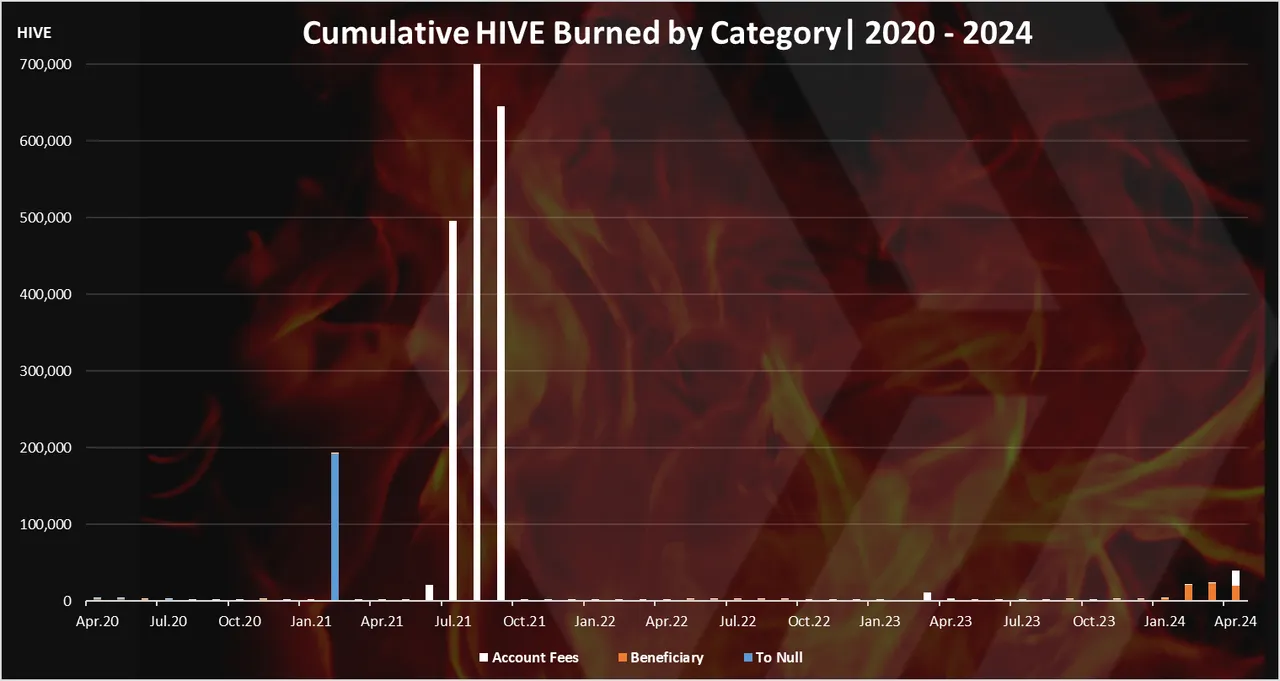
Here we can see the dominance in the burns from the account creation fees in September 2021 by Splinterlands and the one big transfer to @null in February 2021 with 200k HIVE burned.
In total there is around 200k HIVE burned with sent to null, 100k from null as beneficiary and 2M from account creation fees.
This shows that account creation fees has the larger potential to burn HIVE.
When we zoom in 2023 – 2024 we can see the folowing chart:
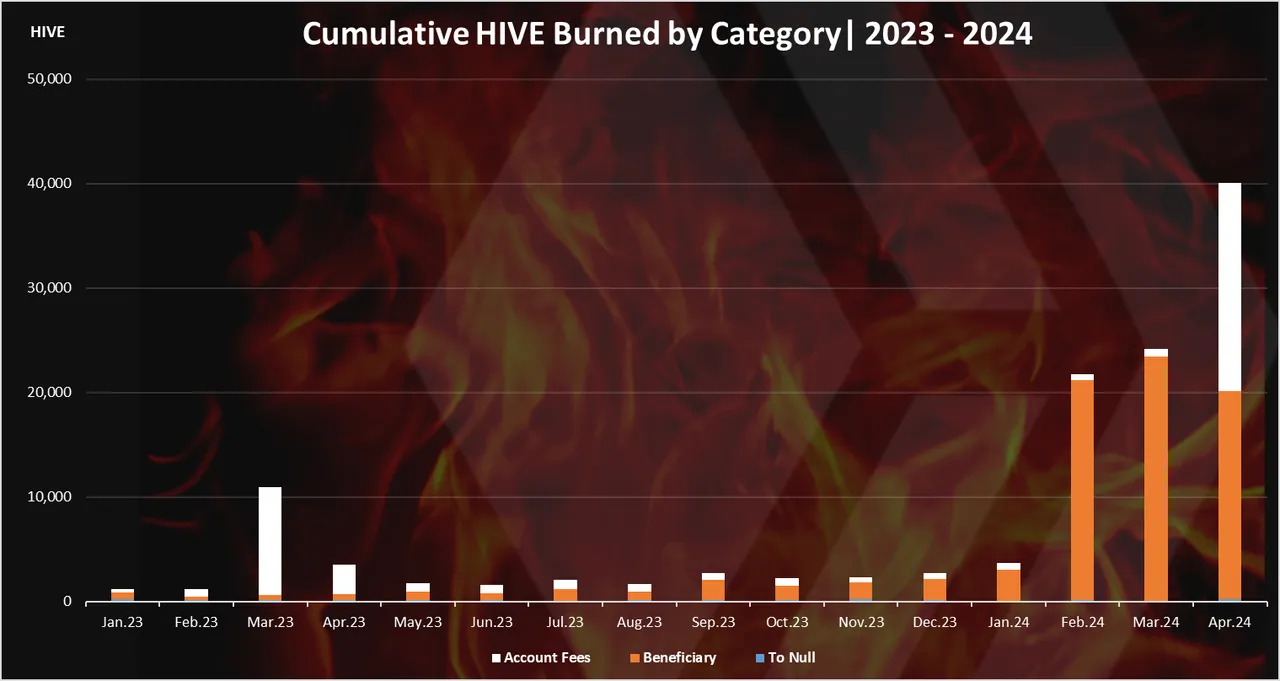
Here is a clearer representation.We can see the growth in the last month of this period. The beneficiary part is particaly notebale, while the account creation fees have spiked only in the last month. Between 25k to 40k HIVE burned per month in the last months, compared to the around 1k per month in the last year.
If we consider the HIVE inflation with around 2 million new tokens created per month (depending on HBD prinitng), the sum above is small. There is some effort for impleenting systematic sollution to burn HIVE, like the way Peakd is doing it, but this has obviously not scaled.
Burning HIVE is mainly about reducing inflation. Infation is a long debated topic here and the point is that it can be easely offset by growth and demand. The official inflation is around 6.5% now but it can greathly be moved in one direction or another depending on the HBD conversions. HIVE to HBD conversions can have a lot more powerfull impact in the amount of HIVE removed from circualtion, but I have not included those one here since that HIVE is not techicly burned but it has changed form so to speak and can in theory be returned back.
From the above we have seen that creating new accounts has been the largest source for burning HIVE. While this has mostly happened in a one time spike it is still has the most effective way for burning HIVE. We just need to onboard users 😊.
All the best
@dalz